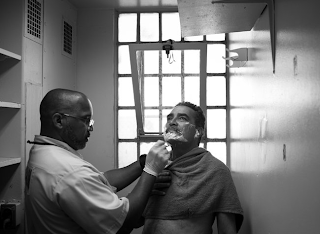Today brings with it an interesting financial gripe: Governor Brown’s concern with the money made by private law firms representing inmates in prison conditions litigation. ABC News Report:
A tally by The Associated Press, compiled from three state agencies, shows California taxpayers have spent $182 million for inmates’ attorneys and court-appointed authorities over the past 15 years. The payments cover a dozen lawsuits filed over the treatment of state prisoners, parolees and incarcerated juveniles, some of which have been settled.
The total exceeds $200 million when the state’s own legal costs are added.
While the amounts are a blip on California’s budget, they provide a continuous income stream for the private attorneys and experts involved in the ongoing litigation. And that is the point Brown is trying to make.
The AP sought the tally after the Democratic governor began using court filings and public appearances to call for an end to two major lawsuits that have forced the state to spend billions of dollars improving its medical and mental health care for prison inmates. Brown says the complaints are expensive, frivolous and motivated by attorneys’ own financial interest.
“They don’t want to go away,” he said last month, standing behind a stack of court documents. “I mean, the name of the game here is, ‘Come to Sacramento and get your little piece of the pie.'”
Brown says that, thanks to recent overhauls, California now offers inmates the best medical and mental health care of any prison system in the nation.
The response from Prison Law Office:
“It’s ridiculous for the governor to merely characterize these cases as being about money, when in fact these cases have been the only impetus in the last 20 years for reducing the prison population and improving conditions,” said Donald Specter, director of the nonprofit Prison Law Office in Berkeley, which has won several major cases against the state.
And from Rosen, Bien, Galvan and Grunfeld:
Michael Bien, the lead attorney representing the welfare of mentally ill inmates in one of the major class-action lawsuits, said Brown is wasting more of the state’s money on a legal fight he has little hope of winning. Moreover, Bien said, inmates’ attorneys expect the court battle will reveal additional lapses in inmate care that will cost the state even more money to fix.
“He’s litigating with your money and my money,” said Bien, of the San Francisco law firm Rosen Bien Galvan and Grunfeld, which is among the law firms that have been paid $19 million by the state in the inmate mental health lawsuit.
He said Brown and the state would be better off complying with a prison population cap supported by the U.S. Supreme Court and by working with Lopes to reduce inmate suicides and improve mental health treatment.
“It’s a distraction from the primary issue here, which is, ‘Why is the state still running unconstitutional prisons where prisoners are dying unnecessarily?'” Bien said. “The easiest way to stop this process is to fix the problem.”
The Washington Post offers the breakdown on legal costs for Plata/Coleman, 1997-2012:
- Inmates’ attorneys (lead firm, Prison Law Office, Berkeley), medical lawsuit: $8.3 million.
- Inmates’ attorneys (lead firm, Rosen Bien Galvan & Grunfeld, San Francisco), mental health lawsuit: $19 million.
- Court-appointed receiver’s attorneys and experts, medical lawsuit: $7 million.
- Court-appointed special master and experts, mental health lawsuit: $48.4 million.
- Private lawyers hired by the state, medical lawsuit: $14.3 million.
- Private lawyers hired by the state, mental health lawsuit: $714,312.
- Justice Department attorneys representing the state, medical lawsuit: $589,797.
- Justice Department attorneys representing the state, mental health lawsuit: $3.5 million.
Total legal costs for medical and mental health lawsuits: $101.8 million.
Query: Wouldn’t taxpayers–particularly the ones exposed to the medical horrors that prompted the Plata/Coleman litigation in the first place–have preferred to see the medical system fixed without any need for litigation?
——–
Props to Caitlin Henry for bringing this to my attention.




